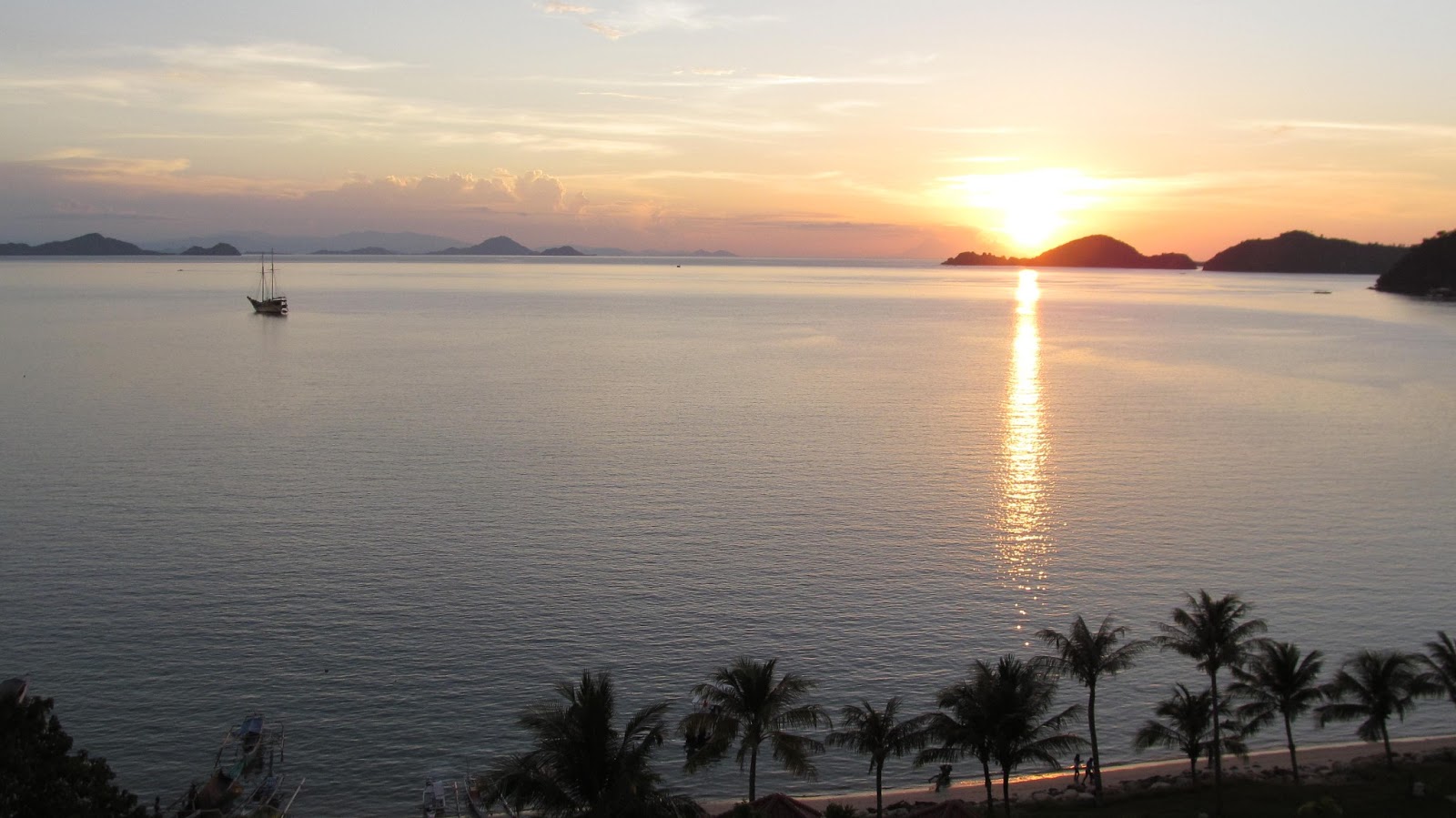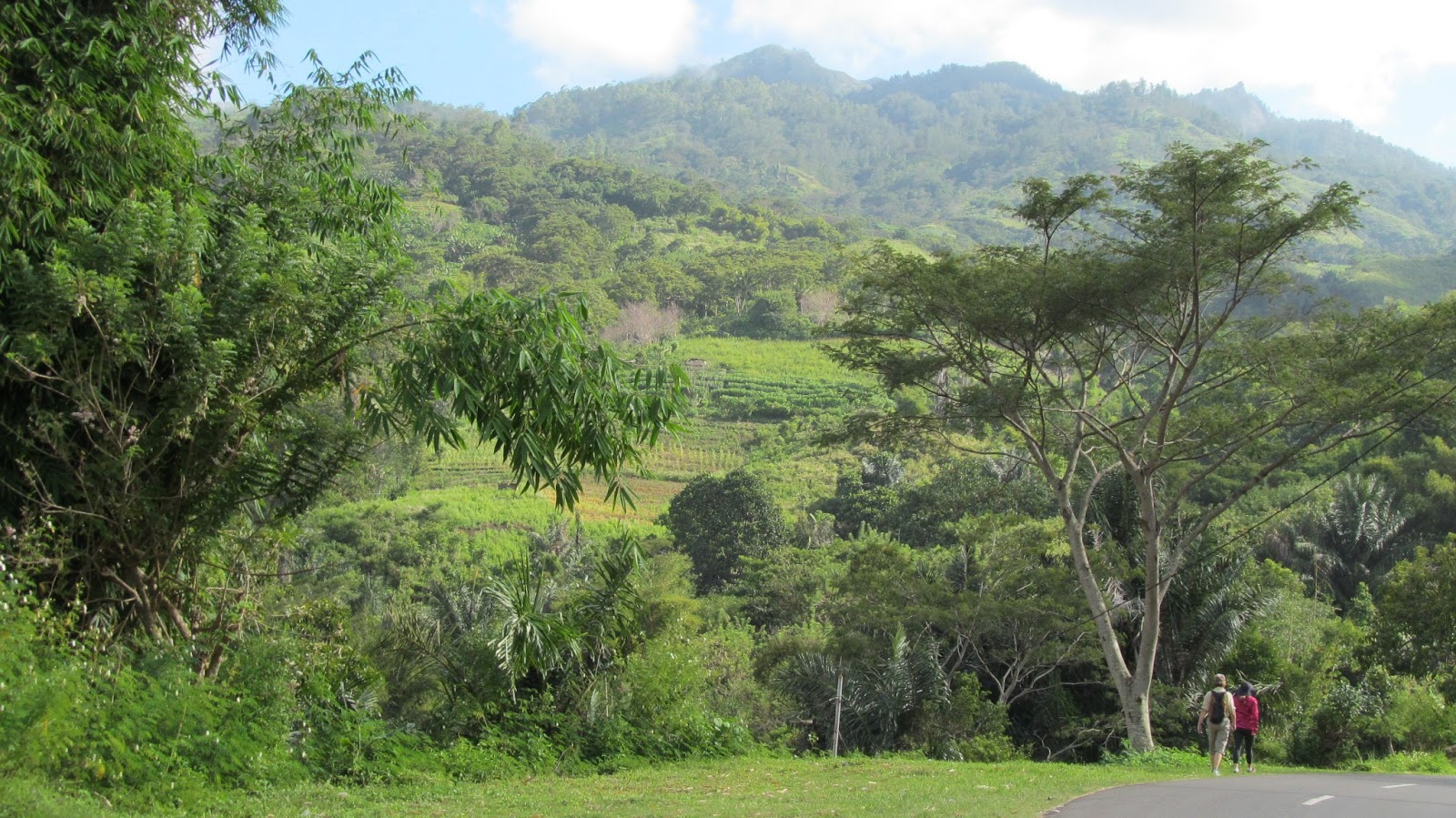 |
| Orchids at Kebun Raya Bogor |
I’ll need a long rest over the next week - this last week I’ve been seeing a tiny bit of Java (pronounced “Jawa” here). When you look at a map of Indonesia, the impression is of a series of small islands strung in a necklace configuration. What’s lost in the overall picture is how big some of these islands are - Java is the fourth largest island in the world. So, my “little trip” turned out to be mostly moving from one spot to the next - but there it is.
The annual VSO volunteer conference was held in Jakarta, which is home to 28 million people. Ok, sit back, close your eyes & imagine almost the entire population of Canada living & working in an area smaller than the GTA. Traffic? Well, yeah. Jakarta, like any big city has it’s run-down areas, but also has some really beautiful streets & neighborhoods, like embassy row. And hands down, they have any Canadian city beat for the diversity & creativity of its skyscrapers. The city is developing rapidly and most of these are very new.
It was great to see all of the volunteers currently working in Indonesia, although we are very few & our enthusiasm is slightly dampened because of the closure of VSO Indonesia in 4 months. After the three-day conference, I took myself down to Bogor, which is about an hour southeast of Jakarta. It only took me 3 hours to get there, following one key mistake at the train station, leading to a search for a bus station, ending up at the wrong bus station, taking a local pete-pete to the right one, then finding THE bus to Bogor, after which it was a comfortable, as-advertised, hour-long trip. I had arranged to meet a couple of people who work for CIFOR (Centre for International Forestry Research) to talk to them about the UnHas forest and see if they had any suggestions on solving some of our problems. That was successful & they had some useful ideas, but the best part of the trip was serendipitously meeting Tom, my homestay (B&B) host. Well, maybe not so serendipitous, his was the first place to pop up on a Google search for Bogor homestay. In any case, throughout my badly planned rapid tour of Java, I met so many people who helped me out - the first of whom was the guy at a travel agent’s office. He used his web link to find Tom’s homestay, then drove me to the house, made sure I thought it was OK, then left with just a thank you.
 |
| Tom the botanist & me, at entrance to Kebun Raya Bogor |
Tom is an avid botanist & environmentalist with a doctorate - now, my grasp of bahasa Indonesian is OK, but it’s still tough to remember long conversations because my brain is still translating while I’m listening. But, I did gather he worked in Sumatra studying elephants for a while & he showed me his name as contributor to a key plant identification book. He’s retired now & runs his homestay where he has a display of pictures of visitors from all over the world.
When I reached his house, I had already met with one of the researchers with whom I had made an appointment, but was planning to go to CIFOR main office later that day. Tom insisted on personally escorting me to the office via local buses & waited for me for the trip back, with a little side walk through an area of forest to look at some trees. Rain & rest for the remainder of the day.
The next day he suggested a walk through the Kebun Raya, botanical gardens which were established in 1817 by the Dutch botanist Reinwardt. Absolutely beautiful & Tom knows them like the back of his hand, guiding me to the most interesting corners with an extended discussion about the plants, their origins & uses. This was the highlight of my trip to Java - ahhh, plants!
 |
| Old Dutch graveyard in Kebun Raya |
When it was time to catch the bus for my next destination, Tom again insisted on escorting me to the bus office & waiting until its departure. By this time, I’m beginning to feel self-conscious & incompetent. Do I look like an old confused lady who desperately needs help to manoeuver the country? I’ve become quite comfortable just asking anyone & everyone on the street for directions, but having Tom lead me around everywhere during my short stay in Bogor actually lowered my self confidence a bit. Maybe I’ll just choose to believe he was bored & was enjoying talking about plants with me. There was no one else staying at his house when I was there & he can talk quite a bit - my contribution to our discussions was mostly just listening & nodding. His last kind act was to hop back onto the bus where I had settled in & give me a big bottle of water. I’m now beginning to worry about his common sense & profit margin - he charged me 90,000 Rp. (between $8 to $9) for the room, but paid for the bus rides around the city if I didn’t have the money in my hand giving it to the driver fast enough, & then the water.
So, this is where distance & underestimation of Indonesian geography comes in. What I should have done is take the train to Jakarta then gotten a train to Yogyakarta, which would have been a comfortable 8 hour trip. What I did do was bus from Bogor to Yogya, kind of a gruelling 18 hour trip, luckily done overnight, which did save me a hotel bill. And, in an executive bus, with comfy seats, but still not a fun night. And not what I had planned, because looking at a map I was hoping to go directly from Bogor southeast to Yogya. My bus was routed back to Jakarta, all around the outskirts to pick up passengers, and then on the highway through the centre of the island. That added about 6 hours to the trip. Had I known... oh well, lesson learned, plan your trip better, right?
 |
| Borobudur |
Landed in Yogya early in the morning & wandered around a bit hopelessly until I found another homestay run by a nice couple, Makurna & Linda. I arrived too early to check in by any hotel or B&B standards, but they let me come on in without mentioning the time, & made me coffee & breakfast. Yogya is a well-known cultural centre with many silver & batik shops, so I thought this was a good place to see with only a couple of days on Java. My plan here was to first visit Borobudur, site of a restored Buddhist temple & my host generously drove me to the bus station to catch a local bus to the town, about an hour north of Yogya. I wandered around the huge temple for a few hours - it was Sunday afternoon, so quite a few people everywhere, except the adjacent museum for some reason - that was empty. During the bus trip back it started pouring - well, it is the rainy season. Caught the city bus to a main tourist shopping area which is under cover & browsed the batik shops, which are endless in number, but not necessarily variety. Ended up back at the homestay more than slightly damp & with absolutely no clean clothes left, so it’s time to go home. Flight back to Makassar the next day, with laundry the priority item.
 |
| Closeup of stone carving, Borobudur |
Interesting trip - I’m starting a personal tally & this trip I can rack up getting lost twice in Jakarta, twice in Bogor & twice in Yogya, a suitably balanced record. While it can be frustrating, it seems to be my style of travel & certainly leads to some unique discoveries. Friendly people (almost) everywhere really enhance travel throughout the country - they all want to chat, give you advice about things to see & often invite you to their homes. Unfriendlies? Well, some taxi drivers can be looking to take advantage, & surprisingly often don’t know their way around the cities - one of my “lost” adventures in Jakarta was in a taxi, & I finally gave up & walked back to the Yogya homestay after no one driving a cab or pedi-cab knew the address & an ojek (motorcycle taxi) driver wanted to charge 3 times what the ride should have cost.
I’m still the reticent Canadian - when I travel at home, the number of people I would spontaneously talk to over 3 days would probably be about 3. This is a list of people I had quite lengthy conversations during this short trip, sometimes as a result of a request for directions, other times just because I was there & someone was curious & friendly.
Lady on bus to Bogor, chatted in English
Guy in travel agency, found me a homestay, drove me to it, talked, introduced me to his son
Tom, as above
School group in botanical garden, teacher chatted, took picture of us all
Man sitting on bench in garden, chatted about family, 3 kids
Man on bus to Yogya, 2 wives, one in Borobudur, one in Surabaya, 3 kids between them, works in Jakarta, offered to arrange a hotel room in Borobudur, but I declined (would have meant getting off the bus at an unknown location)
Guy driving pedi-cab in Yogya, recommended homestay, drove me to it
Mukharno & Linda, 2 adult sons, one still in college studying economics, one with 2 kids of his own, Linda originally from Yogya, Mukharno retired 2 years ago from job in Jakarta, they moved back, bought the house, which had been built by a Dutch man, restored it, started their homestay
Girl working in museum in Borobudur, studied archaeology in Cologne, husband lives in Makassar, wants to stay here, but will probably move to join husband
2 young guys at bus station in Borobudur, offered an ojek ride, but due to rain I declined, waited around with me for the bus back to Yogya, chatting, the only two English words one of them knew were “Quebec City” - hmmm. The other one offered to come back to Canada with me.









































